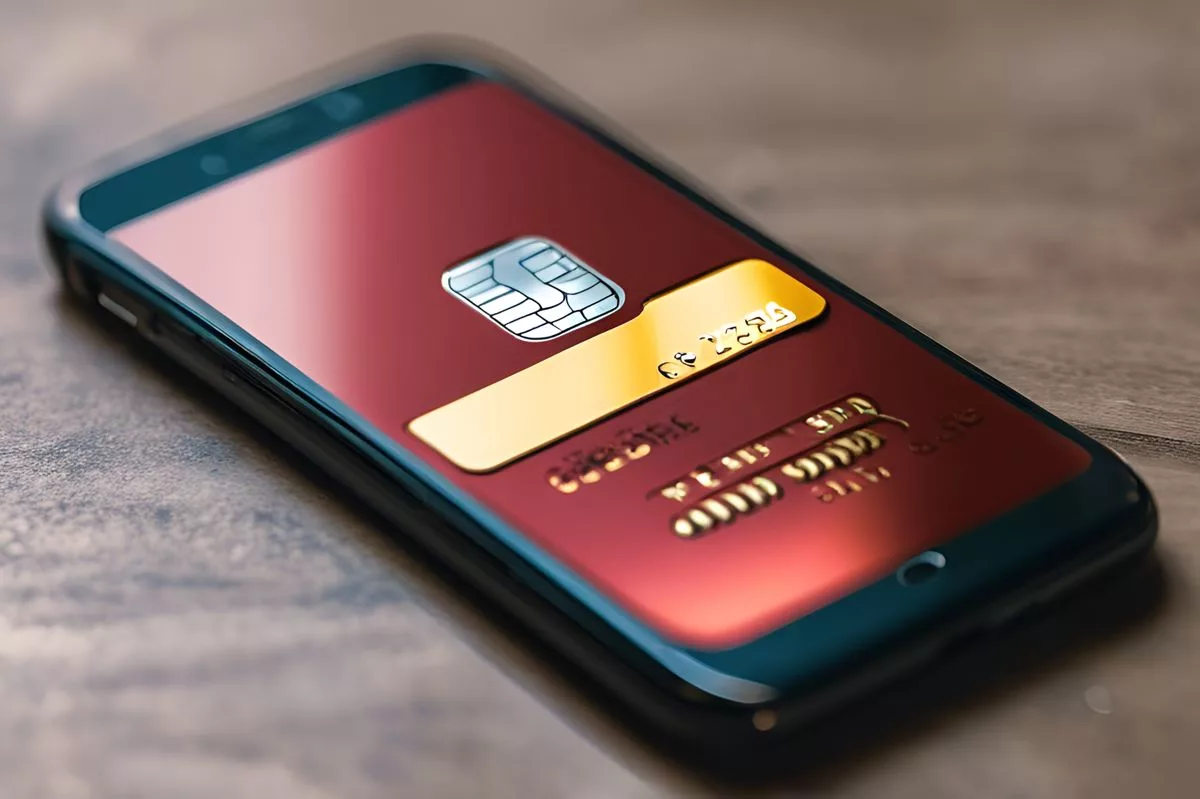The tap-to-pay feature on bank cards is vulnerable to cybercriminals who can duplicate card information with a smartphone equipped with a software application. A recent case in South Africa highlighted the potential risks of digital conveniences, with a woman unknowingly compromising her financial security. To enhance protection, consumers should shield their card during transactions, frequently review bank statements, and utilize secure networks while financial institutions must innovate and enhance security systems. It’s important to find a balance between digital comfort and security.
The Unveiling of the Scam
Crime Watch’s Yusuf Abramjee brought to light an incident involving a tap-to-pay scam at a retail store through a security footage shared on a popular social media platform. The video showed a woman falling victim to this scam during her purchase at the store. The scam artist, who had secured a spot in the line before the woman, let her pay first. He then covertly scanned her card using a smartphone equipped with a software application designed to duplicate card information as she made her payment.
In our technologically advanced society, digital advancements have become a staple of our everyday lives. We rely on Google Maps to guide us through unfamiliar locations, utilize Uber to traverse urban landscapes, and employ mobile banking apps to conduct our financial affairs. However, this digital comfort we enjoy puts us in the crosshairs of cybercriminals. A recent case in South Africa underscores the potential risks tied to digital conveniences such as the tap-to-pay feature on bank cards.
The Unveiling of the Scam
Crime Watch’s Yusuf Abramjee brought to light an incident involving a tap-to-pay scam at a retail store through a security footage shared on a popular social media platform. The video showed a woman falling victim to this scam during her purchase at the store. The scam artist, who had secured a spot in the line before the woman, let her pay first. He then covertly scanned her card using a smartphone equipped with a software application designed to duplicate card information as she made her payment. The unsuspecting woman completed her transaction unknowingly compromising her financial security.
The Mechanics of the Digital Heist
This meticulously planned scam utilizes Near Field Communication (NFC) technology to take advantage of tap-and-go payment systems. As revealed by the Ombudsman for Banking Services (OBSSA), the criminals retrieve crucial information such as the card number, expiry date, and CVV number, and link it to their smart devices on payment platforms. These platforms include Apple Pay, Google Pay, Samsung Pay, and Garmin Pay. The growing popularity of this fraud stems from the fact that digital wallet payments do not require a One-Time-Pin (OTP) for each transaction, allowing the criminals to commit their illegal activities undetected.
The Aftermath and Precautionary Measures
Following the scam’s exposure, First National Bank (FNB), one of South Africa’s leading financial establishments, announced they would no longer support the tap-to-pay feature, causing confusion among its clients. Jason Viljoen, FNB’s head of card digitisation, clarified that the bank is only discontinuing support for the tap-to-pay function in its banking app. The bank will continue to support contactless payments through bank cards and other digital contactless alternatives such as Apple Pay, Google Wallet, Samsung Pay, Garmin Pay, Fitbit Pay, and Swatch Pay. The withdrawal of the in-app tap-to-pay function is set to be completed by 14 April 2024.
Being Mindful of Digital Security
This incident serves as a stern reminder of the potential dangers associated with digital convenience. As technological advancements continue to evolve, so do the strategies employed by cybercriminals. While we savour the comforts provided by technology, prioritizing digital safety is equally important. Simple measures like shielding your card during transactions, frequently reviewing bank statements, and utilizing secure networks can significantly enhance the protection of your finances.
Pursuing a Balance between Convenience and Security
The tap-to-pay scam is a wake-up call for both consumers and financial institutions, emphasizing the necessity for robust security measures and perpetual vigilance against escalating digital threats. It calls for banks to persistently innovate and enhance their security systems, and for consumers to exercise caution when dealing with their financial transactions. This incident underscores the fact that in the realm of digital convenience, safety should never be compromised. It encourages us to find a balance between digital comfort and security, reminding us that while technology can streamline our lives, it can also expose us to hidden threats.
What is tap-to-pay and how is it vulnerable to cybercriminals?
Tap-to-pay is a convenient payment feature on bank cards that allows for quick transactions by simply tapping the card on a payment terminal. However, cybercriminals can duplicate card information with a smartphone equipped with a software application, putting consumers at risk of financial fraud.
What is Near Field Communication (NFC) technology and how is it used in this scam?
NFC technology is used in tap-and-go payment systems to initiate transactions using radio waves when the card is tapped on a payment terminal. Cybercriminals use this technology to retrieve crucial information such as the card number, expiry date, and CVV number, and link it to their smart devices on payment platforms.
What precautionary measures can consumers take to protect their finances?
Consumers can protect their finances by shielding their card during transactions, frequently reviewing bank statements, and utilizing secure networks. It’s important to exercise caution when dealing with financial transactions and prioritize digital safety.
How did the tap-to-pay scam in South Africa come to light?
Crime Watch’s Yusuf Abramjee brought to light an incident involving a tap-to-pay scam at a retail store through a security footage shared on a popular social media platform. The video showed a woman falling victim to this scam during her purchase at the store.
What precautionary measures are financial institutions taking to enhance security?
Financial institutions are innovating and enhancing security systems to protect their clients’ finances. For example, First National Bank (FNB) in South Africa announced they would no longer support the tap-to-pay feature in their banking app, which is set to be completed by 14 April 2024.
What is the importance of finding a balance between digital comfort and security?
While technology can streamline our lives, it can also expose us to hidden threats. It’s important to find a balance between digital comfort and security to ensure that we are not compromising our financial safety in the pursuit of convenience. This incident serves as a reminder for both consumers and financial institutions to prioritize digital safety.












